The KUBErnetes INITiator (The box)
- Latest revision: 2.1 BOM update [Carlos Camacho].
The enclosure is designed as a rackable unit, using 7U. It tries to minimize the space used to deploy an up to 8-node cluster with redundancy for both power and networking.
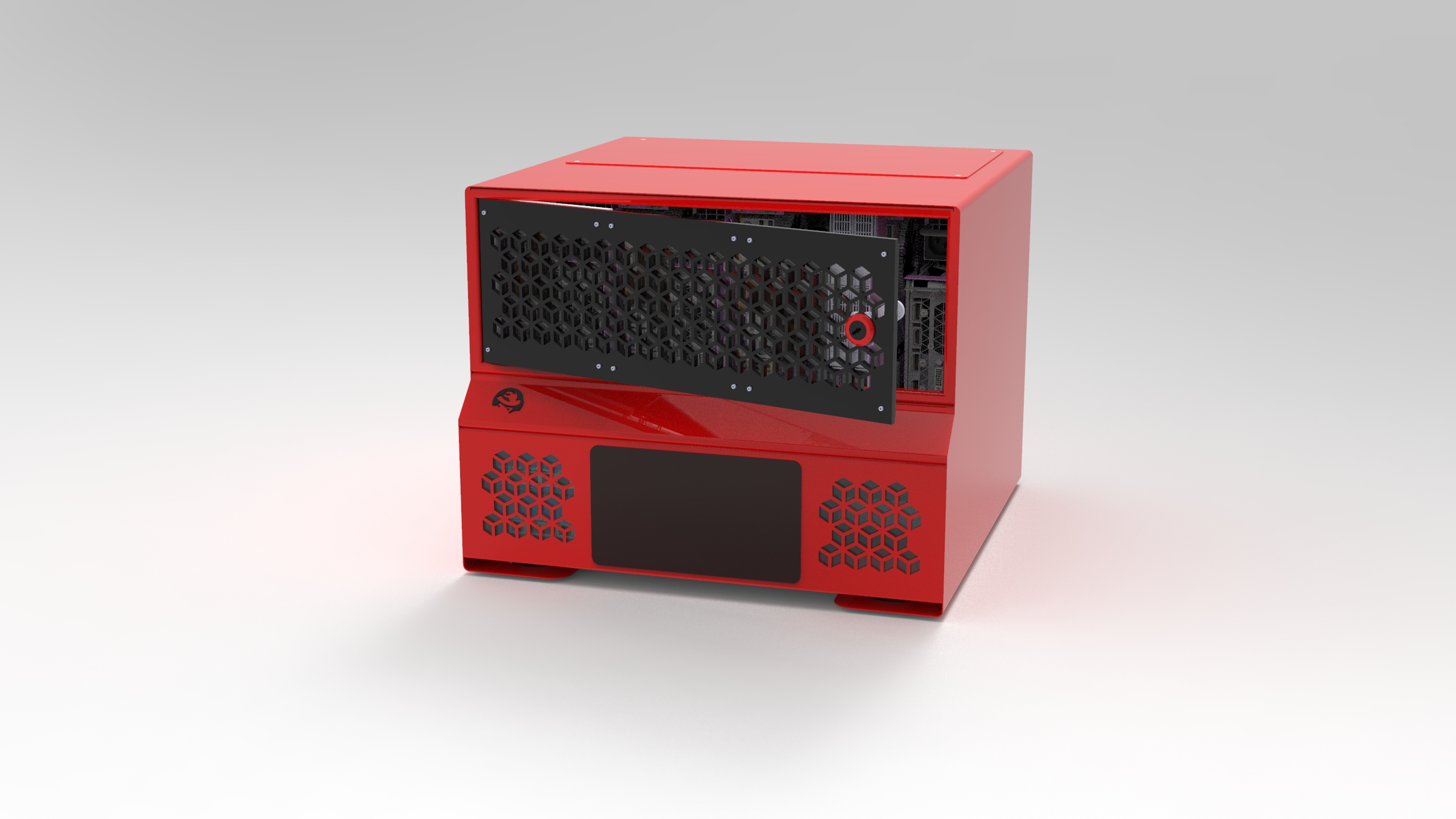 Title Title |
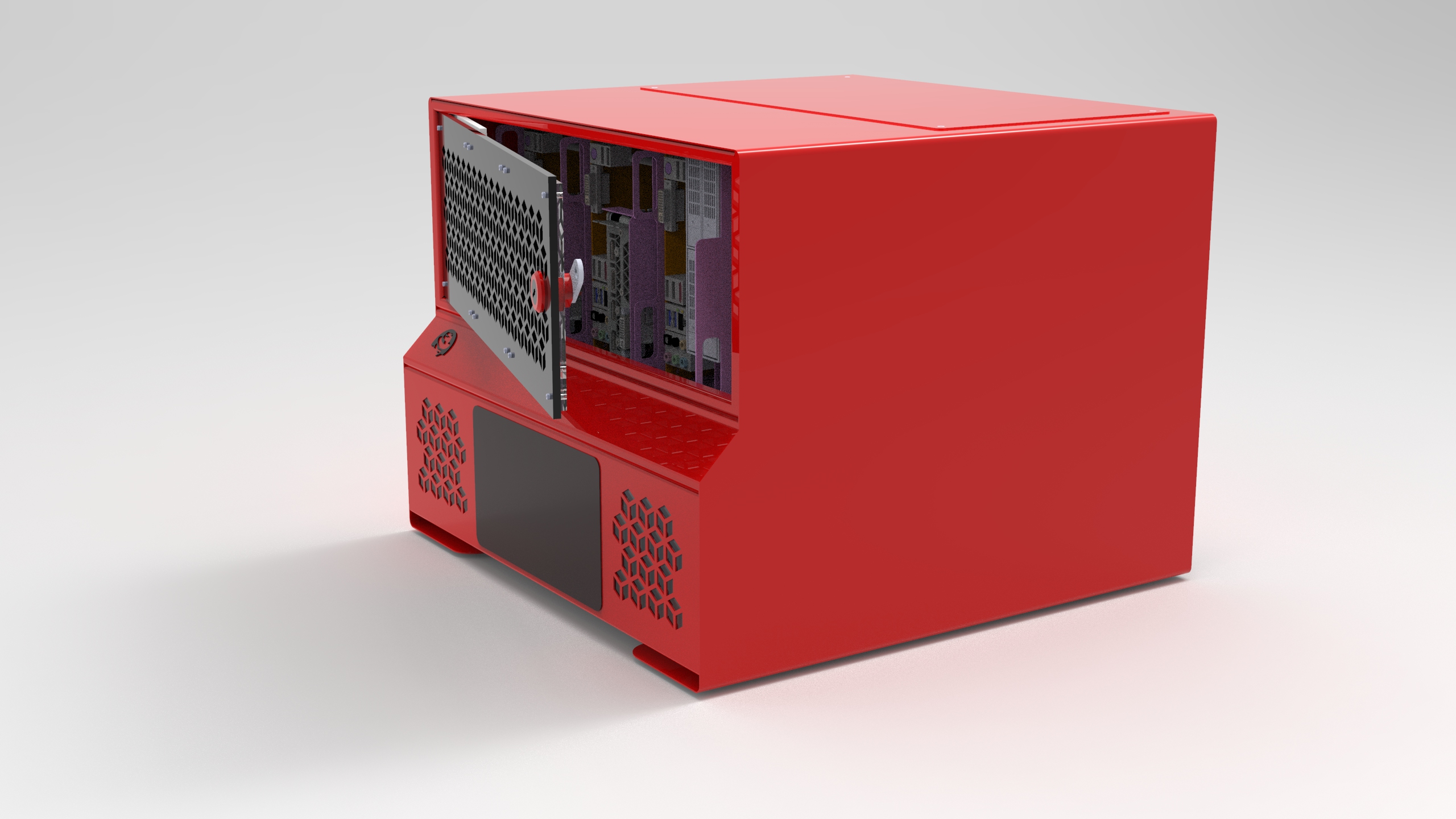 Title Title |
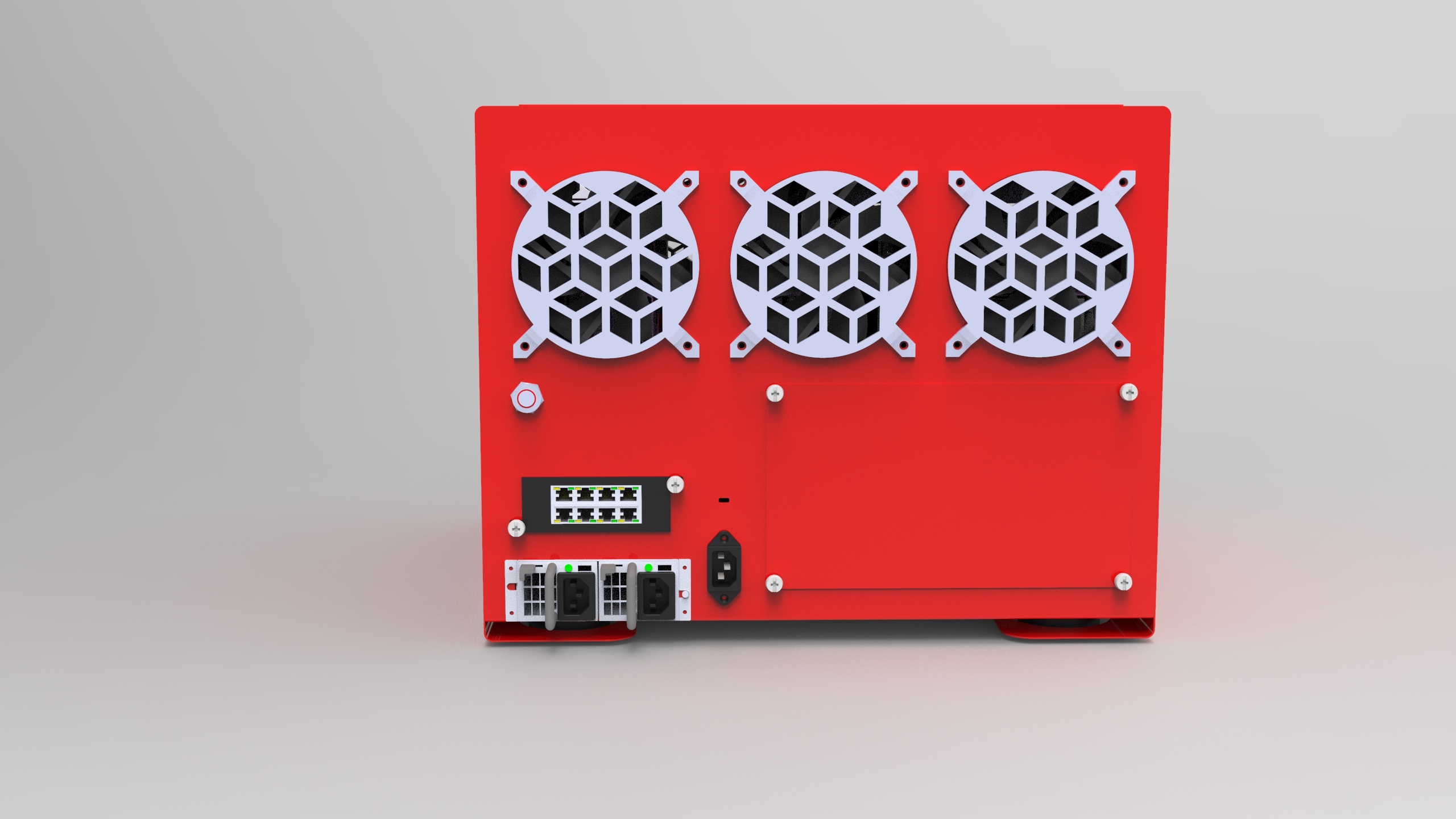 Title Title |
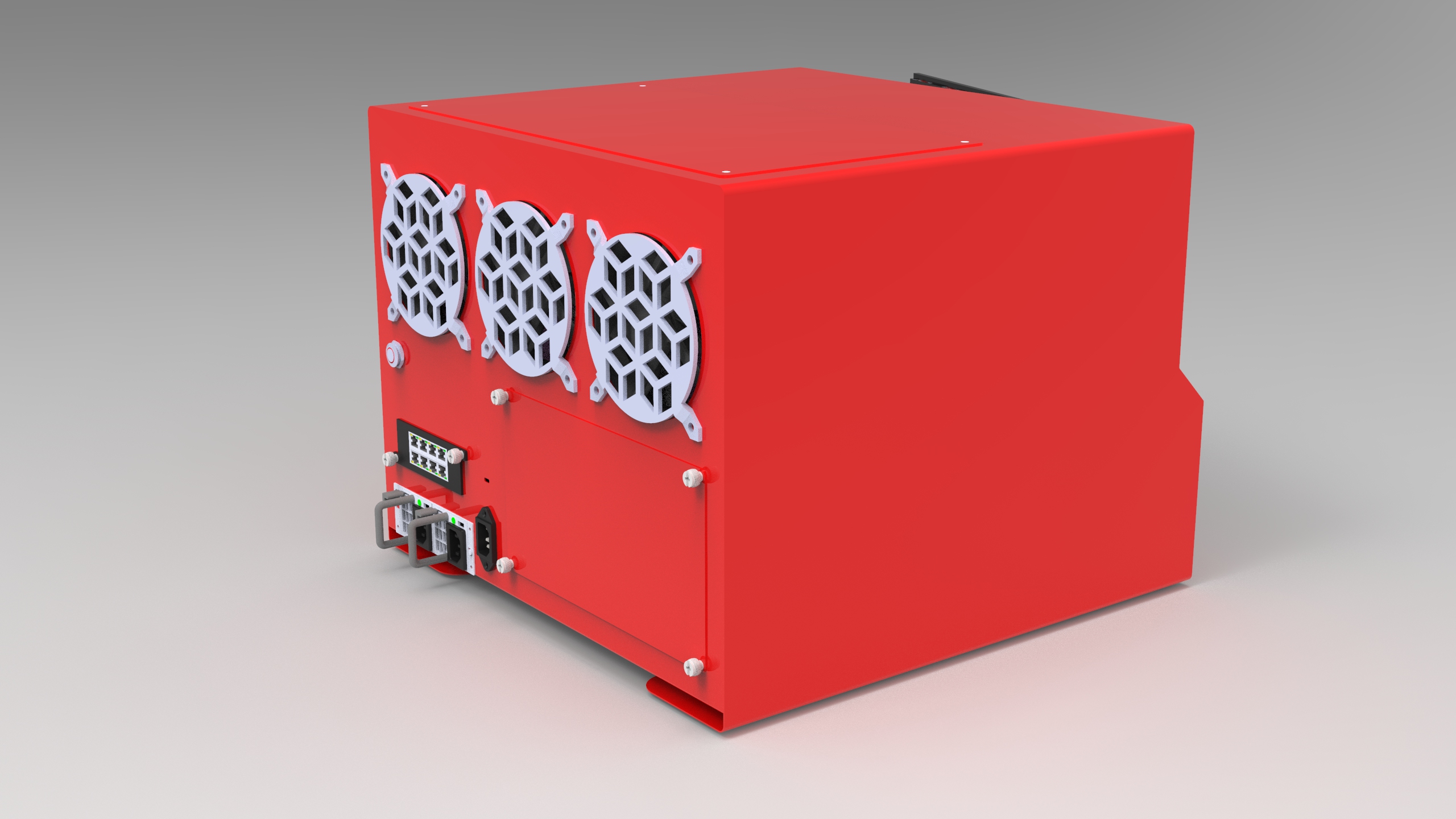 Title Title |
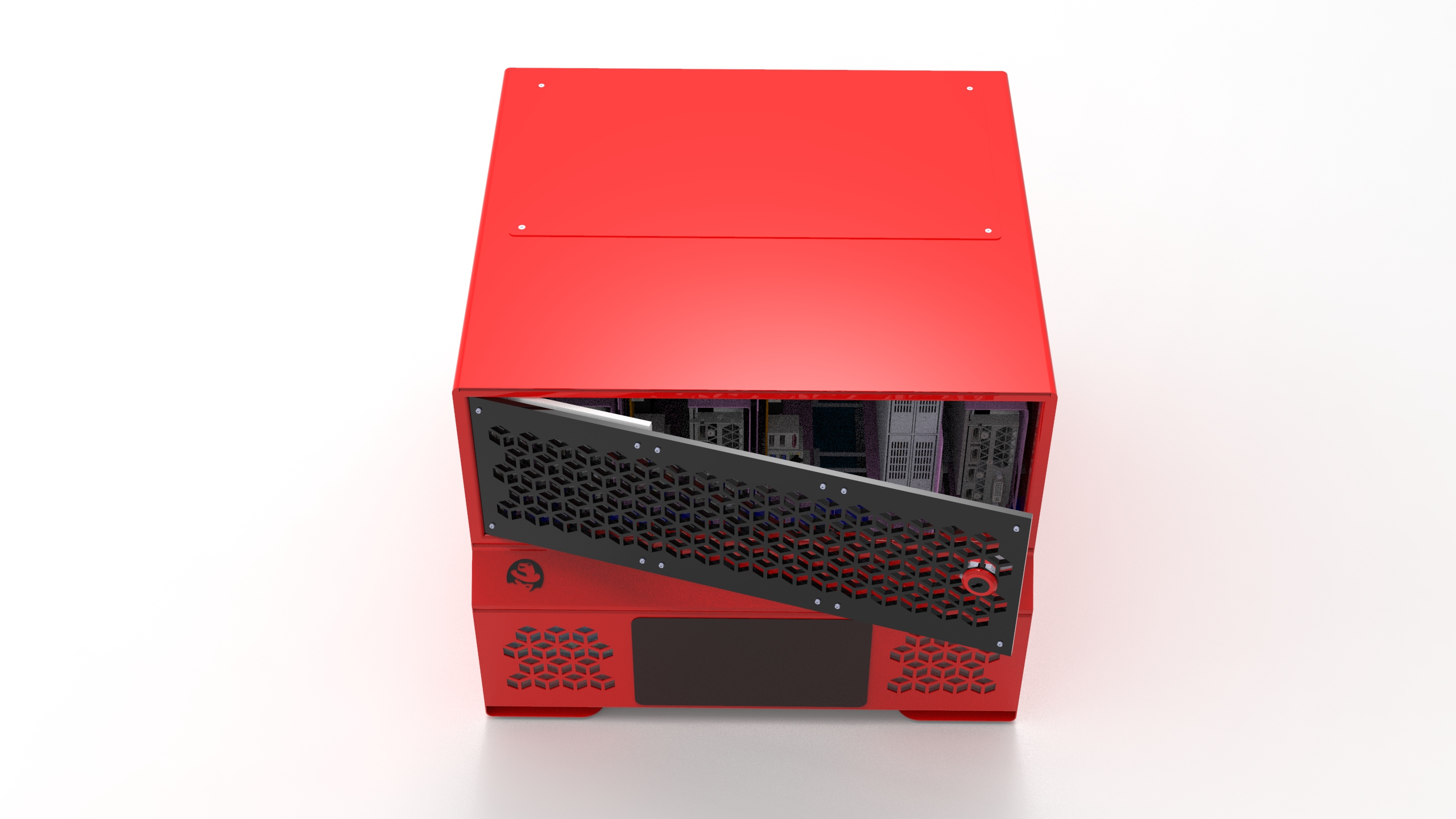 Title Title |
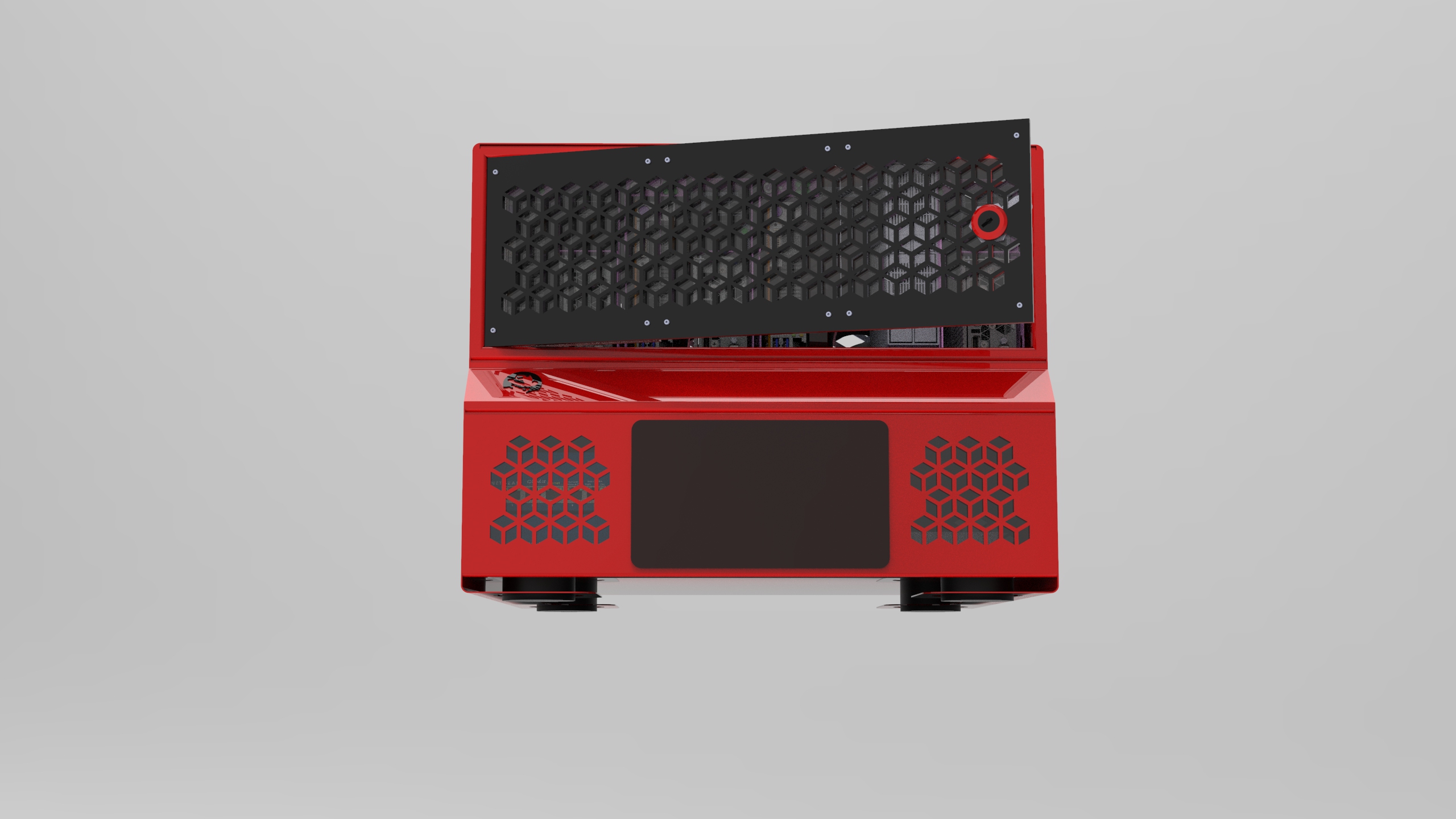 Title Title |
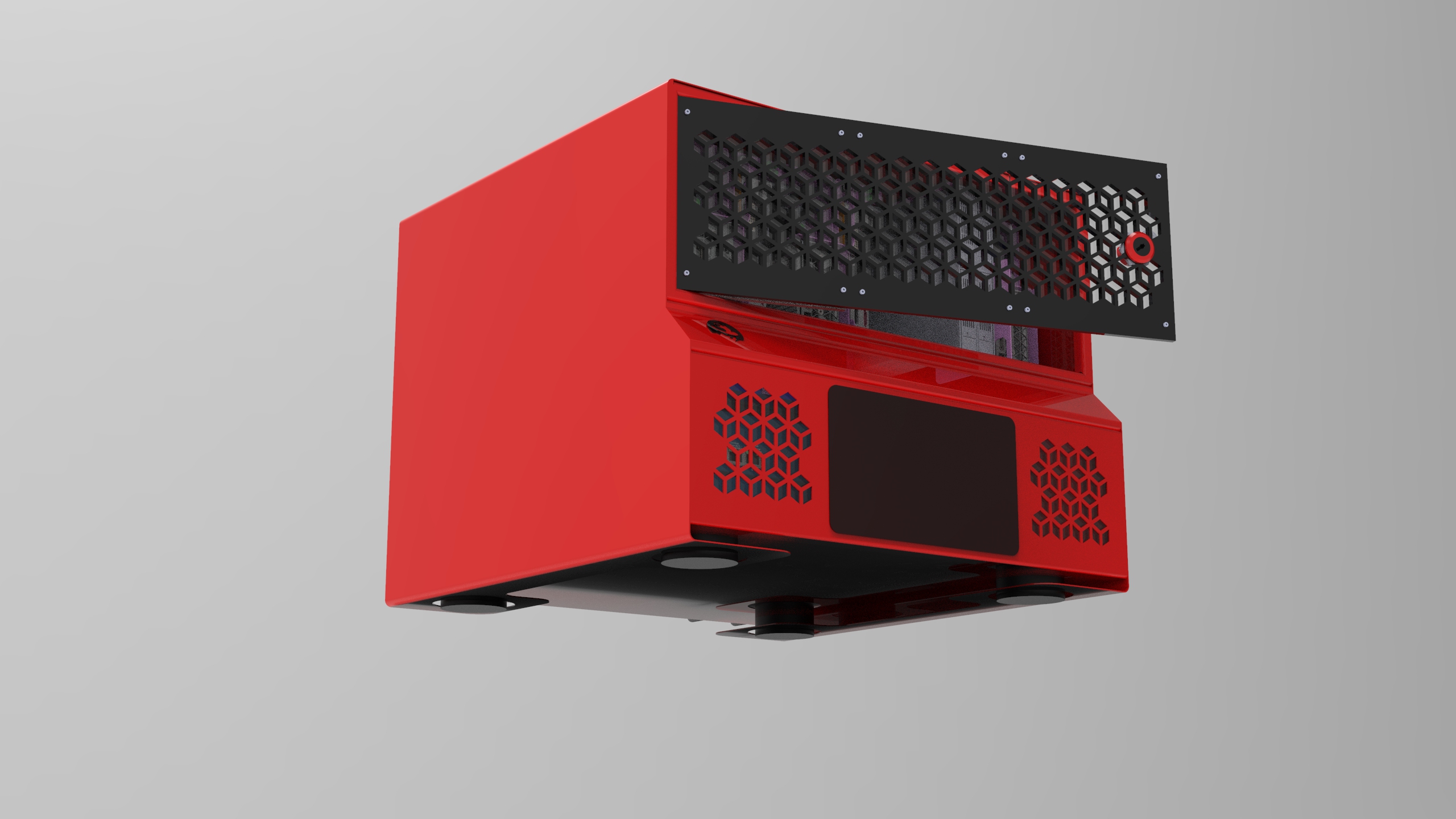 Title Title |
 Title Title |
 Title Title |
Here will be described the different HW combinations for configuring a Kubeinit cluster
The configuration of a Kubeinit chassis is dynamic enough to hold 8 different devices in its bays. In the next picture you can see a general frontal view of different components that can be allocated on each Kubeinit chassis. In the next image from left to right can be seen, compute-node, gpu-bay, compute-node, gpu-bay, compute-node, storage-bay, compute-node, gpu-bay.
There is a Raspberry Pi attached to the front cover of the chassis with the official 7” touch screen. This allows to:
- Control the 3 fan array in the back of the case.
- Show SNMP statistics from the cluster.
- Display cluster state.
- Reprovision the cluster using Ansible.
- Monitor temperature inside the chassis.
- Remote access to the cluster.
- Attach external Monitor/Keyboard/Mouse to a node with direct access to the cluster.
There must be used Mini-ITX form factor motherboards on each Kubeinit bay. Some examples are the following.
Supermicro motherboards
Check Supermicro Mini-ITX motherboards1, up-to 512GB RAM, up-to 16Cores, up-to 10GbE, refer only to SoC boards.
Examples:
In a Kubeinit chassis can be allocated up to two networking switches, depending on the reference design they can be GbE or 10GbE and they can be configured in a redundant manner or not.
Working on production ready configurations should use 10GbE by default.
Redundancy should be provided from two networking switches based on the same model, in the case of a Kubeinit chassis there is a max width of 340mm.
For non redundant scenarios which can be used for non-critical production ready environments, there are multiple options depending on the size and number of ports.
- 16 ports 10GbE switch Netgear XS716E
There are three disk bays in each server pod, so the cluster can hold up to 24 2.5” disks. In addition if used the Asrock MB, can be used an additional 8 disk hot swap caddy with mini SAS ports.
Each node pod is able to hold a full size 16x PCIe card, this can be an additional GPU, FPGA board or any other custom board for specific use cases, for example an additional hot swap disk caddy.
There is a maximum number of additional devices that can be added, and this is based on two constraints, space and power consumption.
- Space: Up to 4 node pods with 1 external device each.
- Power: Each PCIe 16x slot can deliver up to 75w, if there is more power needed then there is the possibility to add 2 Flex ATX PSUs. Each 8-pin connector on the external cards theoretically can deliver up to 150w so forth, the 2 PSUs should allow to connect up to 2 external cards with 2 x 8-pin connector for high power demands.
| Node type | Quantity | Description |
|---|---|---|
| Bastion**** | 1**** | Deployment of the environment, Ansible playbooks, hardware management, etc. |
| Infrastructure | 2 | OpenShift HAProxy, container registry, routing, etcd, logging, metrics. |
| Master | 3 | OpenShift API master, Kubernetes scheduler |
| Compute | 3 | Runs the application containers |
**** The bastion host in this POC can be the raspberry pi node integrated in the front cover.
| Node type | Quantity | Description |
|---|---|---|
| Controllers | 3 | |
| Computes | 4 | |
| Undercloud | 1 | |
| *** |
**** This node can be used also (raspberry pi node integrated in the front cover).
Disclaimer note: All third party trademarks (including logos and icons) referenced by Kubeinit remain the property of their respective owners. Unless specifically identified as such, Kubeinit's use of third party trademarks does not indicate any relationship, sponsorship, or endorsement between Kubeinit and the owners of these trademarks. All references by Kubeinit are for educational or references purposes.
